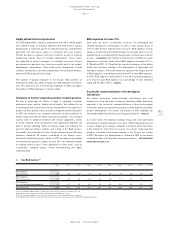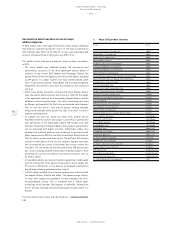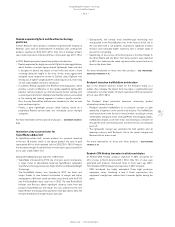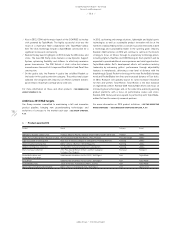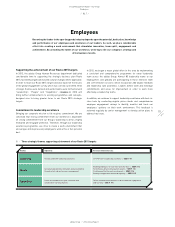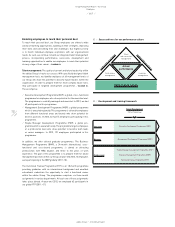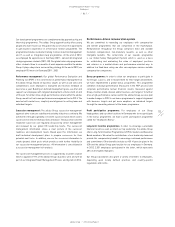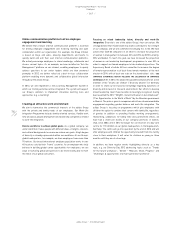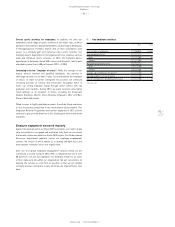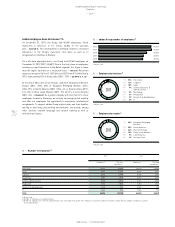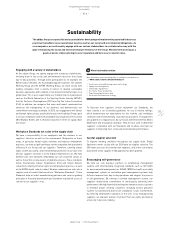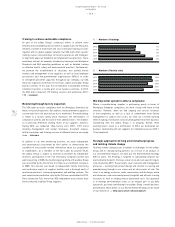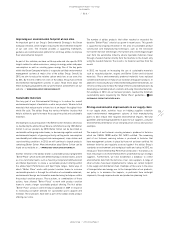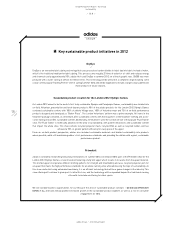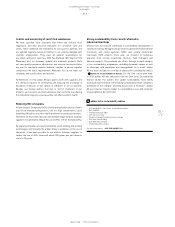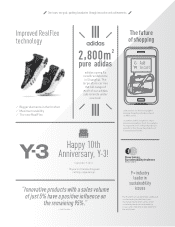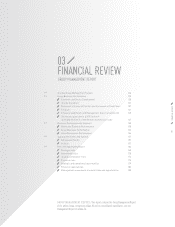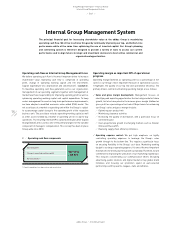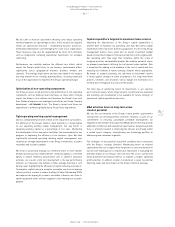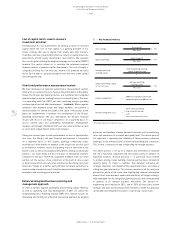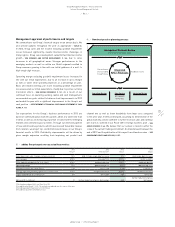Reebok 2012 Annual Report Download - page 139
Download and view the complete annual report
Please find page 139 of the 2012 Reebok annual report below. You can navigate through the pages in the report by either clicking on the pages listed below, or by using the keyword search tool below to find specific information within the annual report.
8
adidas Group
/
2012 Annual Report
Group Management Report – Our Group
117
2012
Sustainability
/
02.8
/
Sustainability
The adidas Group is responsible and accountable for developing and implementing sustainable business
practices that adhere to our operational needs as well as our social and environmental obligations. As
a consequence, we continuously engage with our various stakeholders in a collaborative way with the
goal of enhancing the social and environmental performance of the Group. We believe that acting as a
good corporate citizen will improve our reputation and hence our economic value.
Engaging with a variety of stakeholders
At the adidas Group, we openly engage with numerous stakeholders,
involving them in key social and environmental decisions that shape
day-to-day operations. Through active participation in, for example, the
Better Cotton Initiative, the Sustainable Apparel Coalition, the Leather
Working Group and the AFIRM Working Group, we work closely with
leading companies from a variety of sectors to develop sustainable
business approaches and to debate social and environmental topics on a
global level. This is also supported by our membership in organisations
such as the World Federation of the Sporting Goods Industry (WFSGI),
the Fair Factories Clearinghouse (FFC) and the Fair Labor Association
(FLA). In addition, we recognise that open and honest communication
enhances the transparency of our business and demonstrates our
commitment to being accountable. In 2012, our engagement with labour
and human rights groups specifically focused on the adidas Group’s goal
to ensure compliance with the Sustainable Sourcing Code of the London
2012 Olympic Games and to show best practice in terms of supply chain
disclosure.
Workplace Standards set rules in the supply chain
We have a responsibility to our employees and the workers in our
suppliers’ factories as well as the environment. Malpractice in these
areas, in particular human rights violations and dubious employment
practices, can have a significant impact on the reputation and operational
efficiency of our Group and our suppliers. Therefore, covering labour
rights, health and safety, and environmental protection at our own sites
and our suppliers’ factories is of the highest importance to us. We have
defined rules and standards embedding our own corporate values as
well as those that society expects of global businesses. These standards
follow International Labour Organization (ILO) and United Nations
conventions relating to human rights and employment practices, as well
as the WFSGI model code of conduct. We have condensed our rules into a
supplier code of conduct that we call our “Workplace Standards”. These
Standards help us select manufacturing partners and serve as guiding
principles in the early identification and treatment of potential issues of
concern at our suppliers’ sites.
More information online
More information on the following topics is available on our website at
:
//
W
WW.ADIDAS-GROUP.COM/SUSTAINABILITY
/
Our Group’s sustainability programme and strategy
/
Supply chain management
/
Stakeholder engagement
/
The “Better Place” programme
/
Reporting and performance data
/
Our Group’s Environmental Strategy
To illustrate how suppliers should implement our Standards, we
have created a set of detailed guidelines for use in factory settings,
which demonstrate our expectations for fair, healthy, safe workplace
conditions and environmentally sound factory operations. The guidelines
are updated on a regular basis by our Social and Environmental Affairs
(SEA) team and are publicly available. They are also used to determine
suppliers’ compliance with our Standards and to advise and train our
suppliers in improving their social and environmental performance.
Careful supplier selection
To improve working conditions throughout our supply chain, Global
Operations works closely with our SEA team on supplier selection. The
SEA team assesses all potential new suppliers, and orders can only be
placed with a new supplier if SEA approval has been granted.
Encouraging self-governance
We help our core business partners in establishing management
systems with internationally recognised standards such as ISO 14001
for environmental management or OHSAS 18000 for health and safety
management systems as we believe good management systems help
factories improve their day-to-day operations and support the process
of self-governance. By running a certified management system, our
suppliers demonstrate commitment to continuously enhancing their
performance. We help them build and improve human resources systems
to maintain proper working conditions, including factory grievance
systems to routinely find and fix non-compliance issues. Furthermore,
by enforcing employment standards at the sites of our manufacturing
suppliers, we empower workers to protect their own rights and take an
active role in decision-making.


